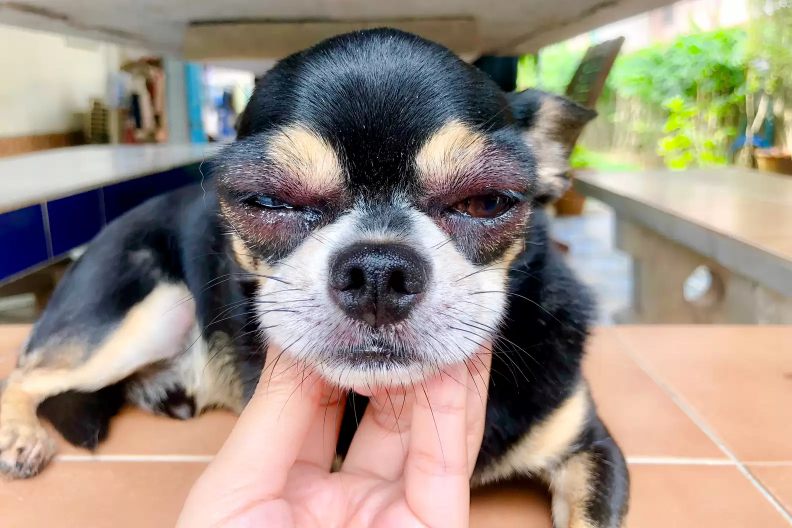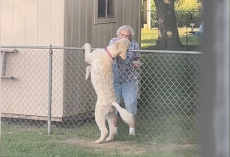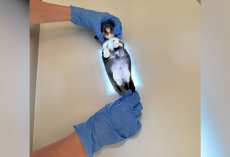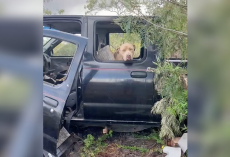You’re out enjoying a sunny day with your pup — maybe hiking a trail or playing in the park — when suddenly, your dog yelps, paws at their face, or starts acting strangely. Then you spot it: a bee.
Bee stings can happen in an instant, and while most are mild, some can be serious or even life-threatening. Knowing what to do right away can make all the difference.
To help you stay prepared, The Dodo spoke with Dr. Fleur Jones, an emergency veterinarian with the Veterinary Emergency Group (VEG), for expert advice on exactly what to do if your dog ever gets stung.
🐝 How to Tell if Your Dog’s Been Stung
“Most pet parents don’t actually see the sting happen,” Dr. Jones explained. “They usually bring their pet in after noticing symptoms like itching or scratching, a swollen face or muzzle, or hives.”
You might also see your dog pacing, panting, or acting restless — signs that they’re uncomfortable or in pain.
But some reactions can be much more serious.
“In more severe cases, you’ll notice symptoms like vomiting, diarrhea, lethargy, or loss of appetite,” Dr. Jones said. “Those can be signs of anaphylaxis, which can be life-threatening. If you see any of those signs, get to a vet immediately.”

💊 What To Do Right Away
If you know your dog’s been stung, the first step is to remove the stinger — if your dog will let you.
Dr. Jones recommends using a credit card instead of tweezers: “Scrape a clean credit card over the sting site to catch the stinger and lift it out. Tweezers can actually squeeze more venom in.”
Once the stinger is out, call your vet to ask about giving Benadryl or head straight to your nearest emergency clinic.
“At the ER, we often give a Benadryl or steroid injection if needed,” Dr. Jones said. “As long as it’s a mild allergic reaction and we see improvement, I’ll usually recommend continuing Benadryl at home for a day or two to help with swelling and hives.”

🧰 What To Keep In Your Dog’s First Aid Kit
If you love hiking or spending time outdoors with your dog, Dr. Jones says there’s one thing you should always pack:
Benadryl tablets.
“They can be really helpful for mild allergic reactions,” Dr. Jones said. “Just make sure you’re using tablets — not liquid Benadryl — because some liquid forms contain xylitol, which is toxic to dogs.”
Before you ever need it, talk to your vet about the correct dose for your dog’s weight. That way, you’ll be ready if an emergency happens far from home.
❤️ The Bottom Line
Bee stings are common, but with quick action and a calm response, your pup will likely be just fine. Remove the stinger, give your vet a call, and watch closely for any signs of a severe reaction.
And if you’re ever unsure, don’t wait — head straight to an emergency vet.
Because when it comes to your best friend’s safety, it’s always better to “bee” cautious. 🐾











